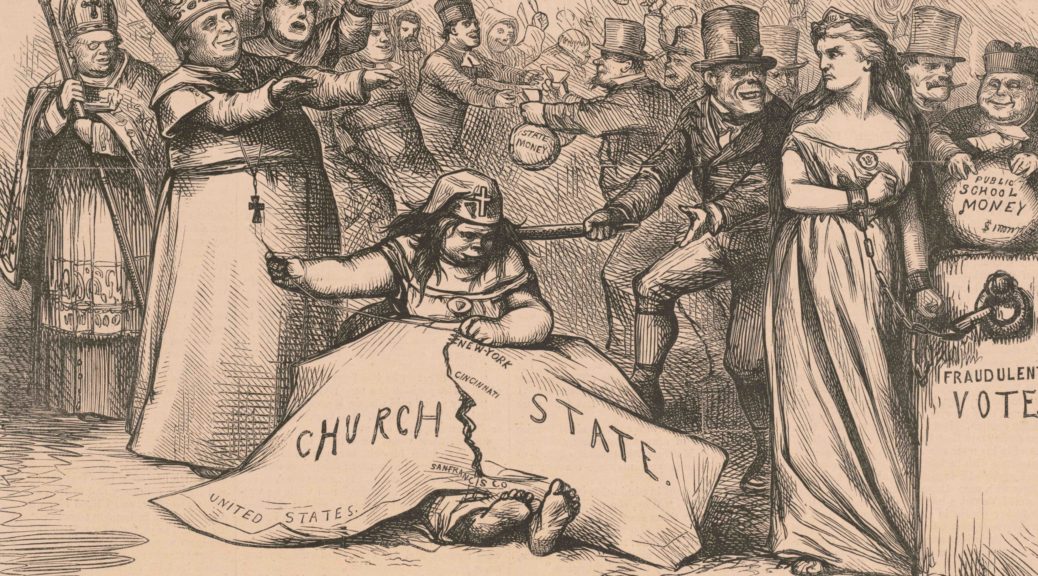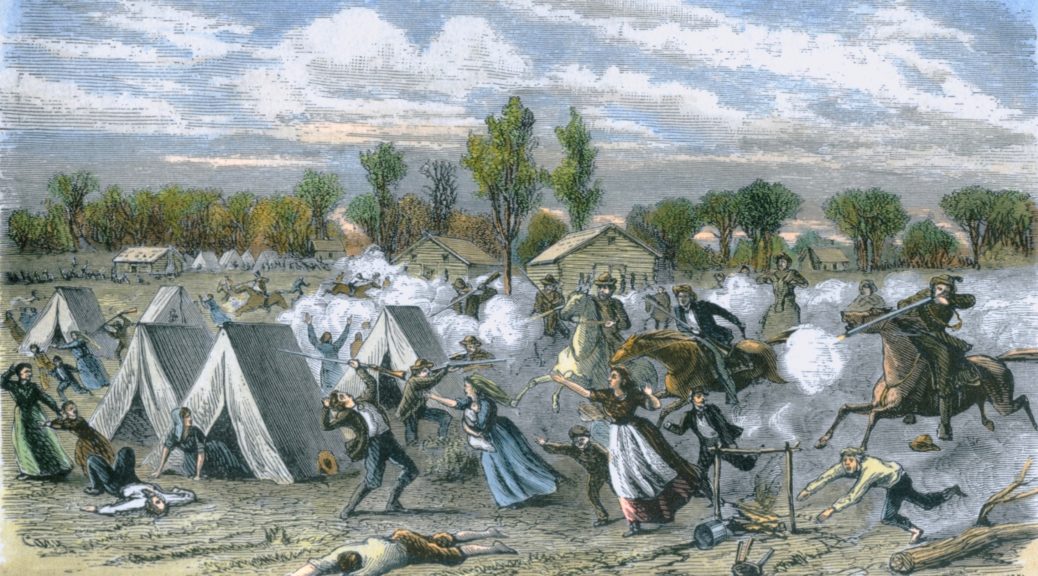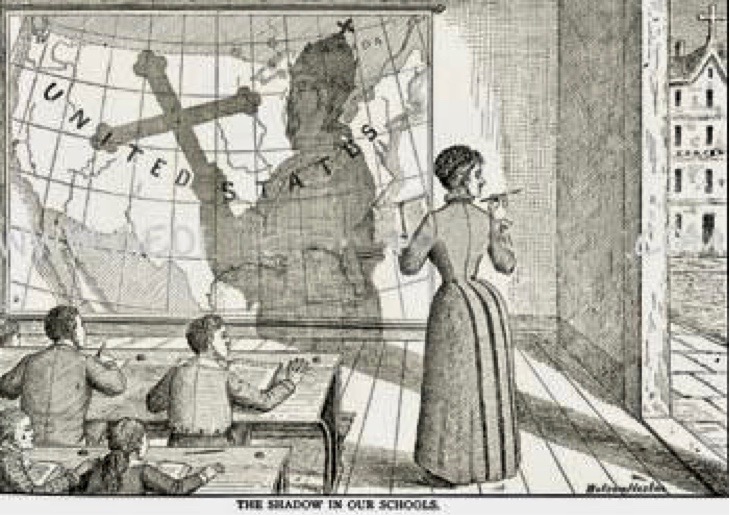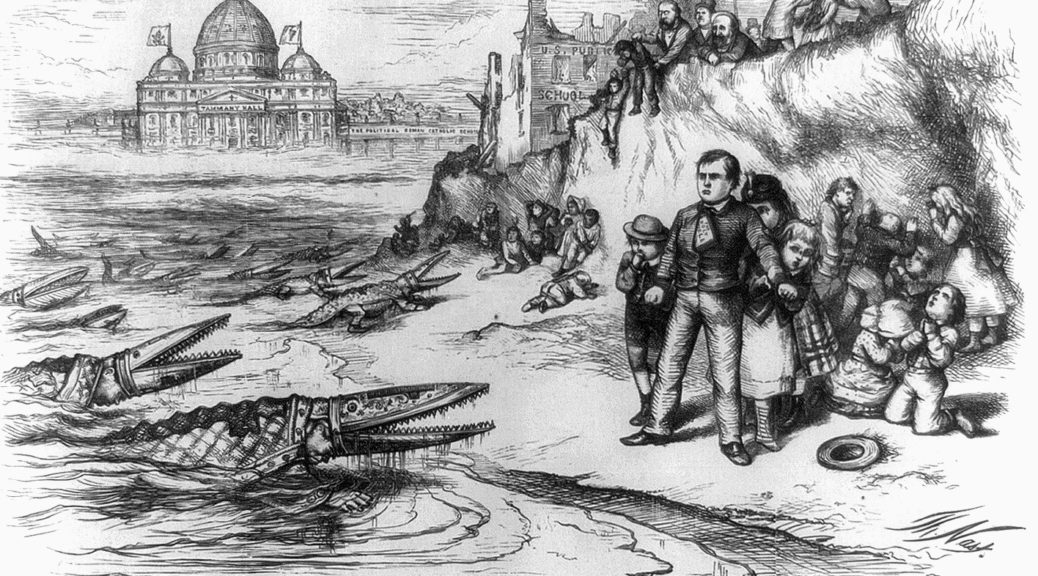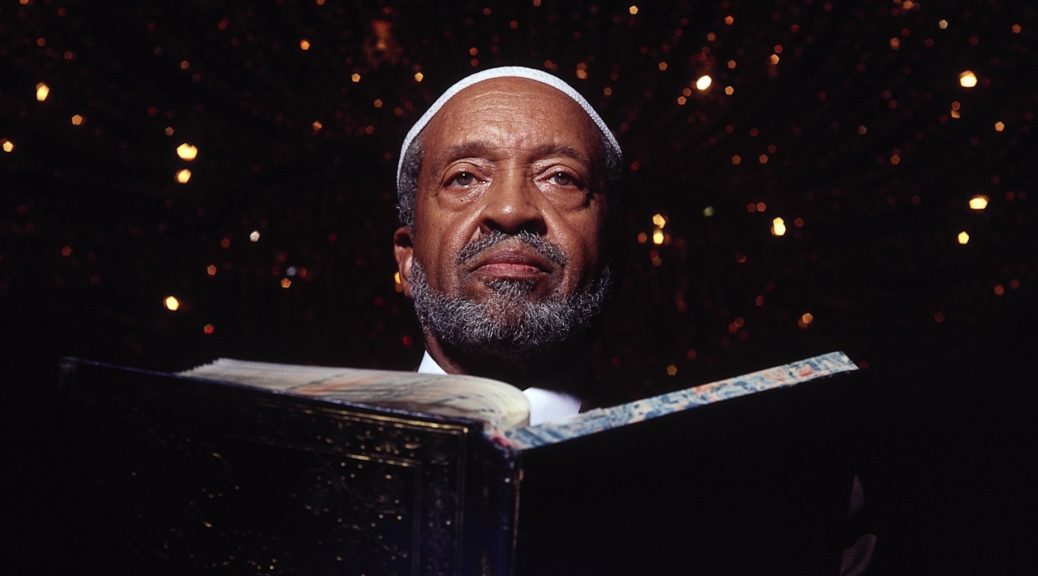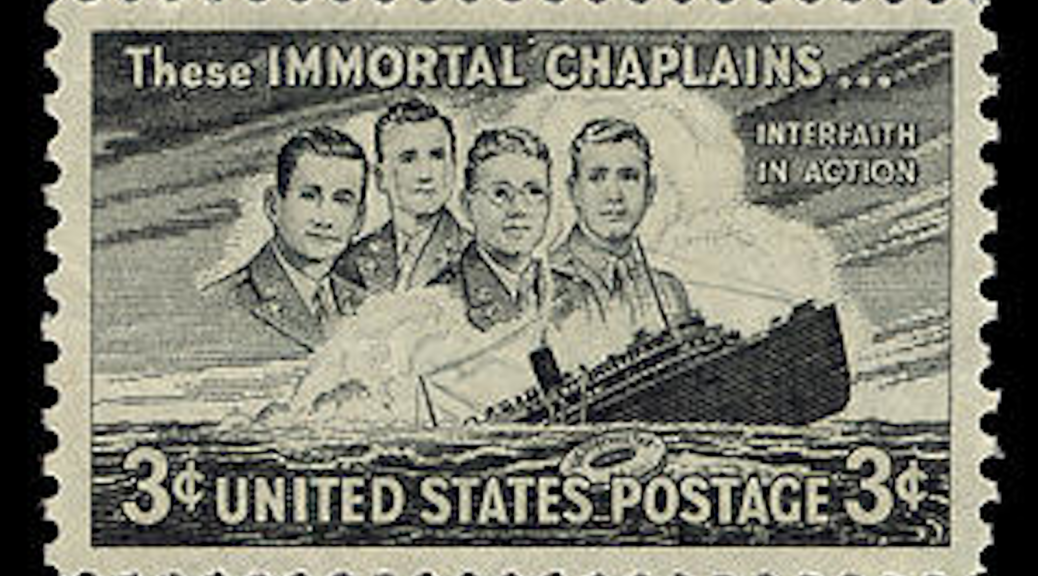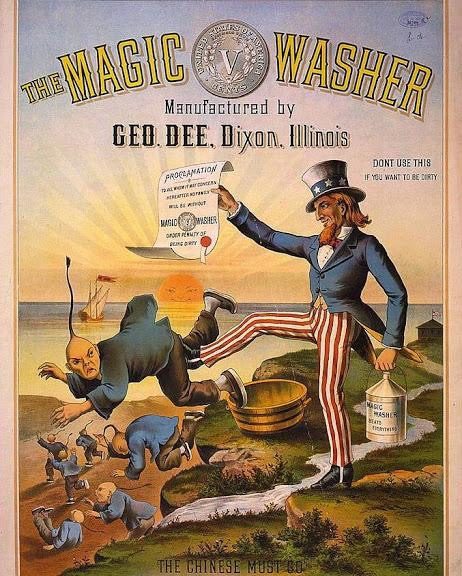Un-separating Church & State
An ape-like Catholic nun is sewing together church and state. Get it? Thomas Nast not-to-subtle message is that American Catholics wanted to destroy the sacred system of separation of church and state. Indeed, a quick way to signal your anti-Catholic bona fides was to declare your support for separation. Note, too, the simian Irishman sneering at Liberty who is chained to a bucket of “fraudulent votes.” Protestants accused Catholics of wanting state money to subsidize Catholic schools, which did happen…
